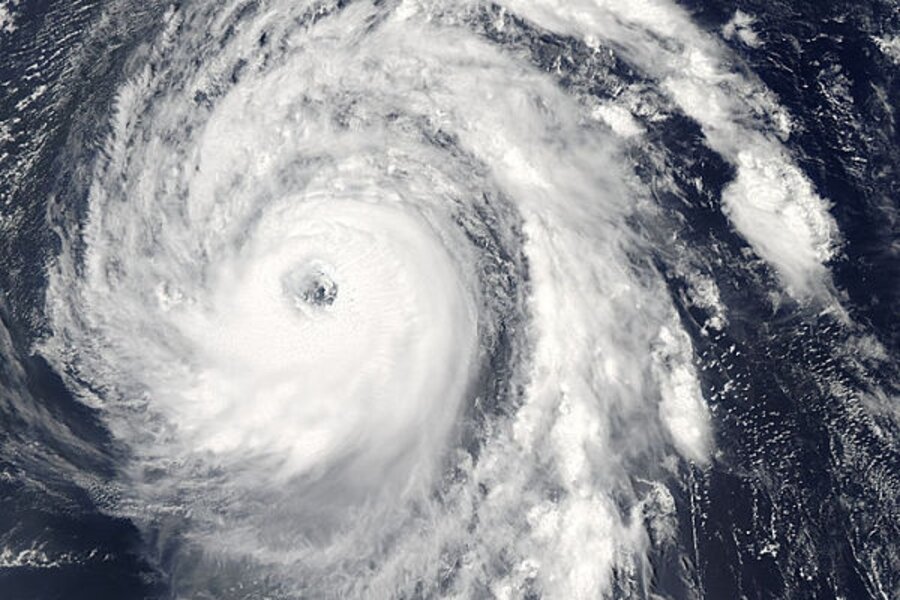Hurricane Bill keeping you up? Take time for personal preparedness
Loading...
With Hurricane Bill churning northwestward in the Atlantic, storm-track charts are in hot demand, ones that take advantage of the power and reach of the worldwide web.
But what do you do with that information, other than become mesmerized by it? Use it as a prod to be sure you and your family are ready for a storm if and when it comes. That means having a family emergency plan, which will stand you in good stead for other natural hazards, including wildfires, earthquakes, or floods.
Several sources can walk you through the steps to being prepared, not the least of which is the American Red Cross's Hurricane Preparedness Guide, which downloads as a PDF file.
High on the list of items: Gather important papers -- wills, house deeds or rental agreements, birth certificates and passports, financial documents, pack them in a waterproof bag, and have them ready to grab on the way out the door in case you're ordered to evacuate. Essentially, you'll still need to pay bills and prove that you are who you say you are and own what you claim you own.
You may not be ordered to evacuate. Many communities are beginning to realize that it may be better to have residents not threatened by hurricane storm surges or who live above flood zones to shelter in place. Or if they need to evacuate, they do so to shelters near by.
But shelter in place implies having plenty of food (of the right kind), water, and other supplies on hand.
Good eats!
Some useful food tips come from nutritionists at Florida International University in Miami. Five years ago, they developed the Healthy Hurricane Cook Book. It's loaded with tips on what to buy, as well as with recipes that ensure people eat well-balanced meals, even when the power is out.
The book grew out of FIU nutritionist Marcia Magnus's observations that people stocking up on groceries ahead of hurricanes that hit Florida in 2004 largely picked junk food or food high in salt and sugar. A lot of the most nutritious food remained on the store shelves.
As for shoring up a home, that generally means shuttering or boarding windows and reinforcing garage doors, which can be particularly vulnerable to high winds. For protecting windows, merely taping them won't cut it.
You can find some good tips on how to get your home ready from the Extension Disaster Education Network at Texas A&M University. The files download as PDFs, and may require that you enter a zip code before you download the file. It's their way of keeping track of the geographic reach of their information.
The instructions for boarding windows are very thorough. Don't overlook the four small holes drilled in each plywood window cover to equalize air pressure. They show up in the diagram only after you enlarge the page in your PDF reader to more than 100 percent of its original size.
Preparation timeline
If you were to think in terms of a time line, the first things to do, long before a storm is even a gleam in the National Hurricane Center's eye, is to develop the family plan and gather what you need for the grab-and-go bags that the Red Cross and other emergency management agencies recommend having at the ready.
This also is the time to custom cut that plywood, and carefully mark on it the window or door it pairs with. Then stash the plywood covers and their fasteners in one easy-to-reach location.
The National Hurricane Center cautions that physical preparations -- boarding windows, clearing yards of loose objects that can become projectiles, and other around-the-house actions should begin once the Center issues a hurricane watch. That's generally about 36 hours before a hurricane is expected to strike an area.
The time to cut and fit the window boards is long before a hurricane approaches. Otherwise, you may show up at Lowes or Home Depot only to find they've sold out of plywood!
And the window preps aren't just for those who live along the Southeast or Gulf Coasts.
At least one insurance company in New England recently increased its homeowners insurance rates. The reinsurance company that insured the insurance company had just boosted its rates over concerns that the region is overdue for a major hurricane.
And the homeowners-insurance provider was passing that increase along to ratepayers. The only way to shave some money off the increase was to prove that you had a new roof installed recently, or that you had FEMA-approved storm shutters for your windows. And that covers all policyholders, not just those right along the coast. Plywood certainly does not equal FEMA-approved, but clearly someone thinks shuttering isn't just for the Southeast or Gulf Coasts.
These are just a smattering of ideas and sources for emergency-preparedness information. As you visit some of these sites, they will give you additional ideas and in more detail.
Don't overlook your state emergency-management office web site. It will have more detailed tips specific to your area. FEMA has a list of the state and territorial agencies with links to their websites.





